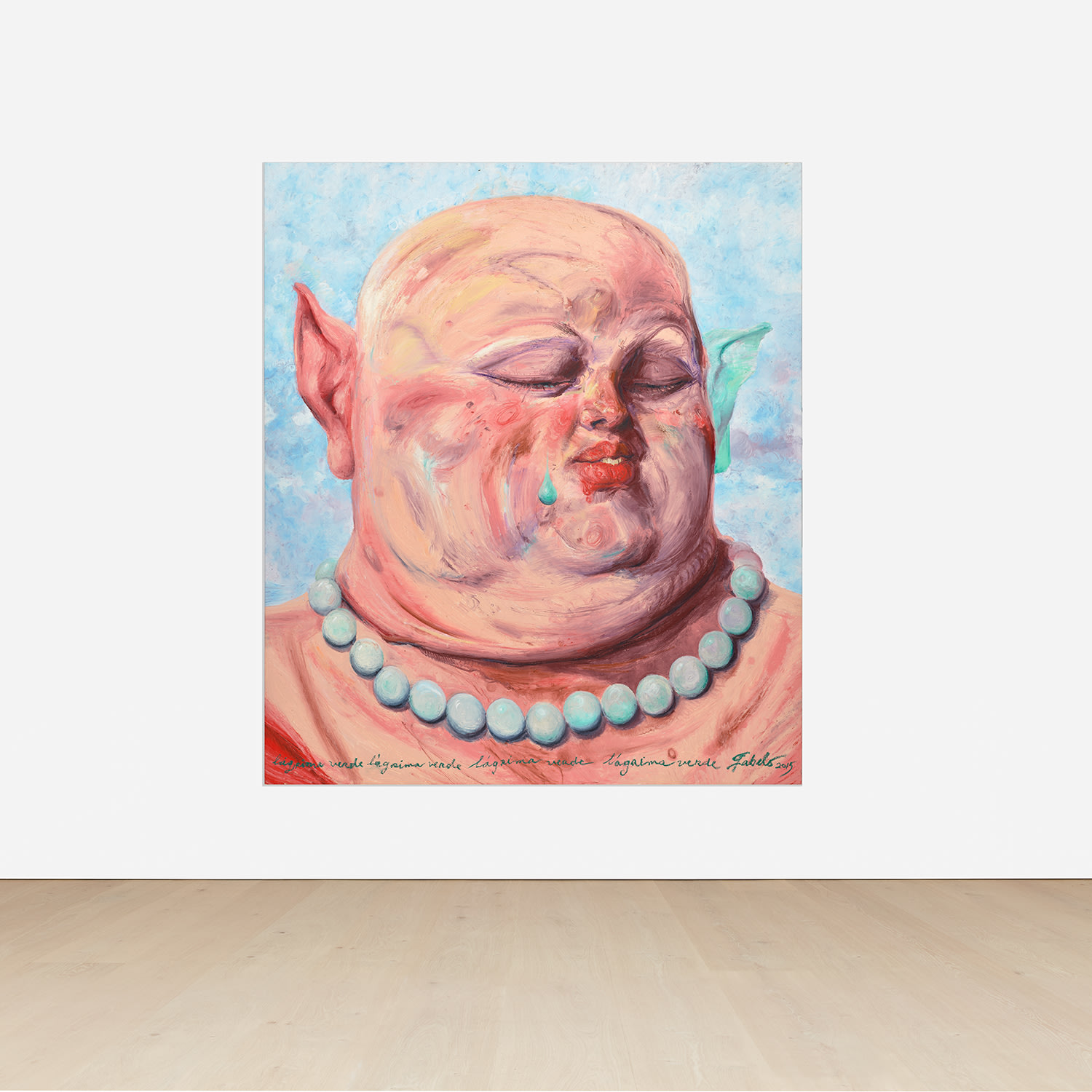



392
Roberto Fabelo
La Lágrima Verde
signed, partially titled and dated "lágrima verde lágrima verde lágrima verde lágrima verde Fabelo 2015" lower edge; signed, titled and dated "Fabelo "LÁGRIMA VERDE" Fabelo Fabelo "LÁGRIMA VERDE" 2015" on the reverse
oil on canvas
91 1/2 x 78 3/4 in. (232.4 x 200 cm)
Painted in 2015.